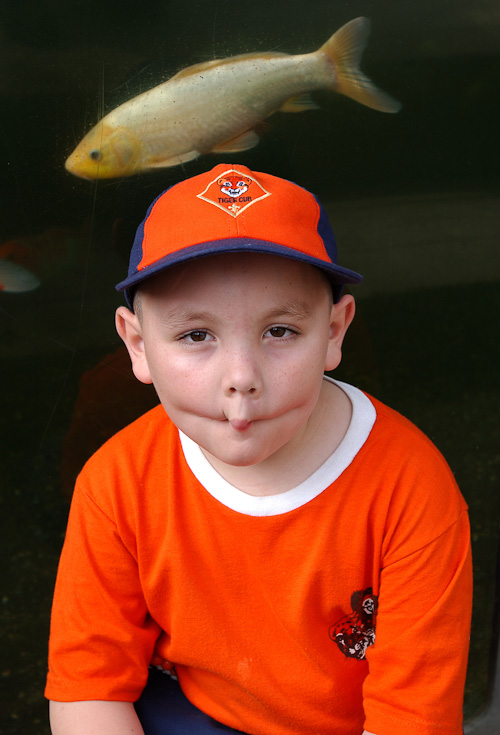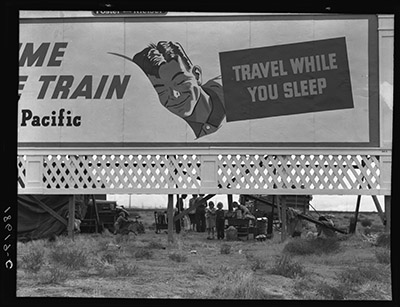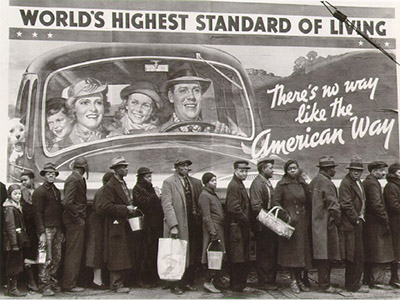Juxtaposition

Juxtaposition makes this picture of the boy and fish. That is, several elements in a picture produce a meaning beyond what either one alone could do. In this case we have a fish and a boy making a face like a fish. The boy, without the fish, would just be making a face. The fish without the boy is boring but put the two together and you have humor. Juxtaposition is often humorous but the technique can be used for a serious message too.
This picture made by Dorothea Lange in 1938 juxtaposes a billboard showing the luxury of traveling by train with three destitute families living underneath the sign. The poor families make a visual lie of the content of the billboard. In this case, juxtaposition is used to convey a serious message.


Margaret Bourke-White’s picture of the breadline also uses a billboard juxtaposed against a breadline. The billboard content portrays a prosperous Anglo family, two parents, two children and a dog riding in a new car. Below are African-Americans waiting for food in a breadline. The contrast between the two themes is striking.
Both Bourke-White and Lange have used the juxtaposition of a billboard projecting high standard of living with real people suggesting just the opposite.
Juxtaposition is a wonderful tool for humor and for powerful social commentary.
